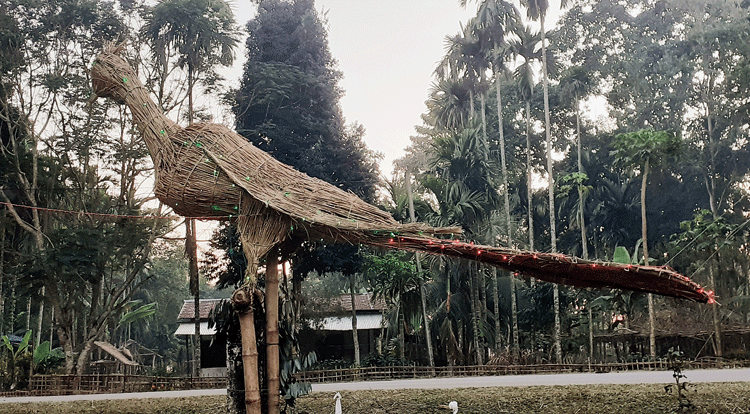This Bhogali Bihu will give villagers, their relatives and friends not only time to indulge in festivities but also sit together and discuss the effect of the Citizenship (Amendment) Act on Assam.
“I work in Kathmandu (Nepal) but my hometown is Shantipur village in Tinsukia district. For the last three years, I had not visited my village. But after hearing of CAA, my colleagues and I worried about our villagers, language, culture, customs and conventions. This law has definitely made us more aware about our land, language, people and culture,” said Mani Mohan Hazarika, sporting a gamosa around his neck and listening to Bihu songs on his mobile phone, on Monday.
“Bhelaghar and meji will provide a great rendezvous point for discussion on course of action against CAA,” said a youth at Kakopathar village.
People working in Guwahati, Jorhat, Sivasagar and other parts of the state and the rest of the Northeast are returning to their villages, along with those who live in Delhi, Mumbai, Chennai, Bangalore and abroad to take part in the festivities.
“On uruka night, we will all sit together, eat, dance, pray and discuss the CAA crisis. The Act has brought our kith and kin together. Those who had forgotten their villages have realised the value of motherland and the aromatic flavours of pitha and laroo,” said Dombeshwar Moran, a resident of Phillobari.
In the run-up of the festival, villagers in Assam and bordering Arunachal Pradesh, Nagaland and Meghalaya build the most striking bhelaghars (bamboo and straw structures) and mejis, which are set on fire.
The night before Bhogali Bihu is called uruka, the night of feasts. The villagers prepare various dishes and sweets like pitha and laroo. The next morning, the community gathers to light the meji and pray for a good harvest in the year ahead.
Offerings are made to the fire and people then enjoy jalpan (breakfast).










